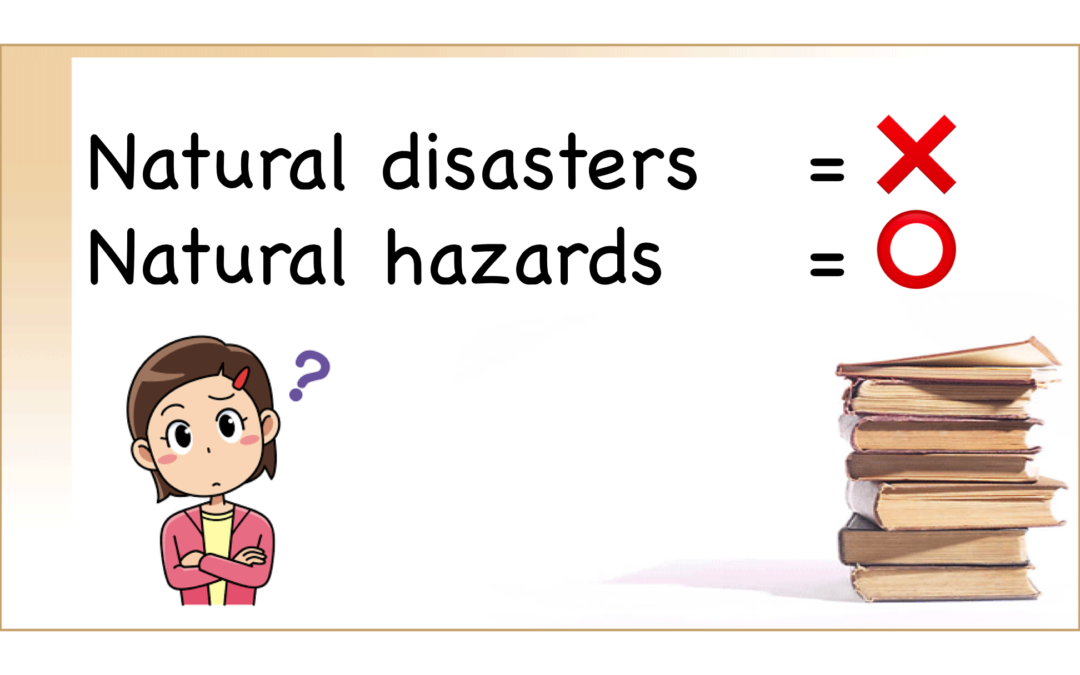
“There is no such thing as a Natural Disasters, only Natural Hazards”
Gradually, many disaster practitioners and researcher are starting to understand and embrace the concept that there is no such thing as a “Natural Disaster.” This is one of the first things that our disaster program teaches our students when they start learning or doing research about environmental and disaster risk management. Still, many students (and even some faculty members) get confused in the beginning, not understanding this idea well.
“But aren’t floods and landslides natural disasters? And fires and chemical spills are human-made disasters.”

Perhaps this is only a matter of having a common definition of the term “disasters” The best way I can help them understand this concept is to let them think about the definition of the word “disaster.”
“If there is a huge flood or landslide in middle of nowhere that didn’t affect anyone or destroy any property, can we call that a disaster? We can probably call that a natural phenomenon.”
In many cases, most remain unconvinced with this explanation. Yes, we can explain about disasters being a combined result of exposure, vulnerability and coping capacity, but there is much more behind the meaning.
I’ve once talked to a farmer living in a flood-prone area in Rantau Panjang, Kelantan, that experiences annual flooding and was central during the historical Eastern Peninsular flooding in 2014. When I asked the farmer the reason why he and his family do not evacuate when the local authorities give out the flood early warnings, he replied, “Because the burglars often come when there is flood. I have to stay home to protect my properties for my family.”

Disaster managers and often overlook these kinds of realities on the field and continue to wonder why people do not listen to their advisories and warnings. What they might be missing is capturing the underlying factors that make disaster system dysfunctional. Of course, science and technology can forecast bad weather or earthquake proof critical infrastructures, but there are also human elements or our own actions that are equally important and greatly influence the level of disaster risks that our society face.
Ever since we moved on from thinking that disasters are God given and that humans have no control over them, we are now talking about how disaster risks can be reduced and/or managed (thus the word, “Disaster Risk Reduction and Management”). If we say that all disasters are human induced in one way or another and not “natural”, then it would mean that we do have at least some control over them.
Although natural hazards instigated by Mother Nature cannot be controlled, our advancement in science and technology and better understanding about disaster risks and how they can be managed, disaster managers, policy makers, scientists and communities should have a sense that our work can somehow determine our own future – in another words, we have a choice to keep ourselves safer and secure from natural hazards.

In this light, we, as educators and researchers who are conscious of contributing to our society through science, should stop using the word, “natural” disasters. There are still many things we can do as scientists to help local governments, communities and other interested groups to prevent or reduce the effects of disasters.
*DPPC Blog is a series of thoughts written about environmental and disaster management arising from our education, research and field activities.
